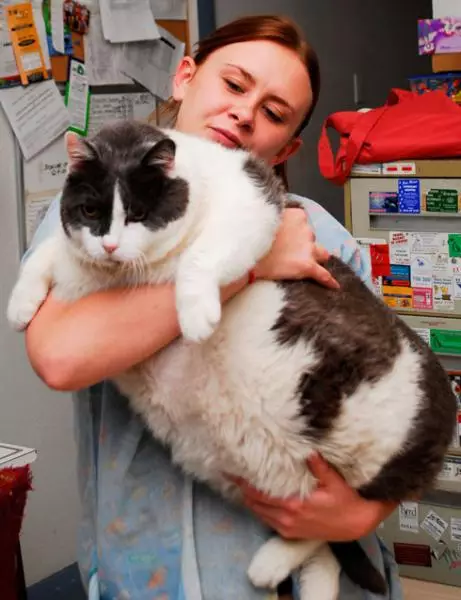In recent years, the alarming trend of feline obesity has gained recognition among pet owners and veterinarians alike. It’s estimated that nearly half of the cats in the UK struggle with weight issues, presenting an urgent concern for the welfare of our furry companions. The term ‘obesity’ refers to cats being 20% or more above their ideal weight, while ‘overweight’ refers to 10% to 19% excess weight. Contrary to popular belief, this issue is not purely cosmetic—it dramatically influences a cat’s lifespan and quality of life. Knowing and addressing your cat’s body condition is fundamental to ensuring a long, healthy existence.
The Importance of Monitoring Body Condition Scores
To effectively assess a cat’s weight, a body condition score (BCS) scale is utilized. This straightforward system categorizes cats on a 1 to 5 scale, with 1 being extremely thin, 3 representing an ideal weight, and 5 being obese. This scale serves as a crucial tool for pet owners and veterinarians to evaluate feline health holistically. A cat with a poor BCS may exhibit difficulty in activities as simple as grooming or playing, while one at an ideal condition is not only more agile but also happier.
Often, signs of obesity are subtle, making it challenging for pet owners to notice changes over time. For instance, a lack of noticeable ribs, a thick layer of fat covering bony areas, and a noticeable belly droop are clear indicators of excess weight. Owners should familiarize themselves with these signs to better monitor their cat’s health long before issues escalate.
The Hidden Dangers of Obesity
Obesity is not merely an aesthetic concern; it carries significant medical implications. Overweight cats face increased risk for a myriad of health conditions including diabetes, arthritis, dental problems, and hypertension. Furthermore, the burden excessive weight places on a cat’s joints and organs can severely diminish their quality of life. Long-term studies illustrate that the lifespan of an obese cat can be drastically shorter than that of a healthy-weight feline.
A key component of weight management is understanding the causes of obesity, such as calorie surplus and energy balance. Cats develop a positive energy balance when their caloric intake consistently surpasses their caloric expenditure. Many pet owners fall prey to the habit of free-feeding or offering excessive treats, which contribute significantly to overeating.
The Role of Lifestyle Factors
Several factors influence a cat’s propensity to gain weight. Interestingly, lifestyle choices play a crucial role in feline obesity. Neutered males, for example, are particularly at risk due to a decrease in metabolic activity, requiring less food to maintain their condition. Additionally, as cats age, their energy requirements diminish, making them more susceptible to weight gain.
Another prominent factor is activity level. Cats that lack mental stimulation and physical opportunities are likely to engage in less exercise, leading to inevitable weight gain. Incorporating playtime and exercise in a cat’s daily routine is absolutely essential. Utilizing toys, interactive play, and even puzzle feeders can stimulate both mental and physical engagement, reducing the risk of excess weight.
Implementing Effective Weight Management Strategies
If your cat finds themselves on the heavier side of the scale, it’s crucial to adopt a structured weight loss plan. The role of veterinarians cannot be overstated in this process; they can provide tailored dietary recommendations and exercise strategies based on individual needs. Weight loss should be gradual—rushing the process can lead to severe health complications, such as hepatic lipidosis, a life-threatening condition where fat accumulates in the liver.
Feeding a specialized diet that is high in protein yet low in fat and carbohydrates can play a pivotal role in helping cats shed excess weight while maintaining their muscle mass. In addition to a proper diet, gradually increasing physical activity through play and movement-oriented games can substantially enhance overall well-being and facilitate weight loss.
Monitoring Progress and Long-Term Solutions
While it is often challenging for owners to perceive changes in their cat’s weight due to daily proximity, regular veterinary check-ups—including weigh-ins—can provide crucial objectivity and accountability. These appointments allow for the monitoring of progress and adjustments to the weight management plan as necessary.
Once a cat reaches its desired weight, maintenance is key. Switching to ‘light’ or low-calorie food options will prevent the unwanted return of extra pounds. Continued monitoring is essential to catch any early signs of weight gain, thus ensuring that your cat remains in optimal health for years to come.
As cat owners, it becomes our responsibility to educate ourselves about the critical importance of maintaining healthy weights for our pets. An informed approach to feline nutrition, exercise, and weight management can lead to happier, healthier lives for our cherished companions.
